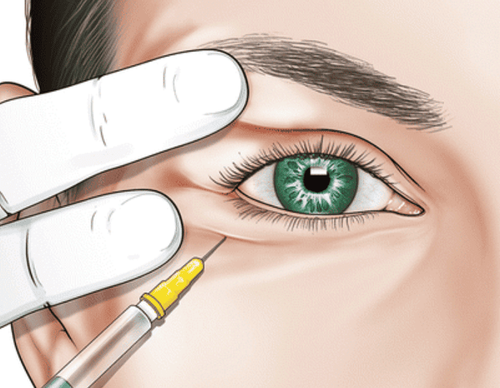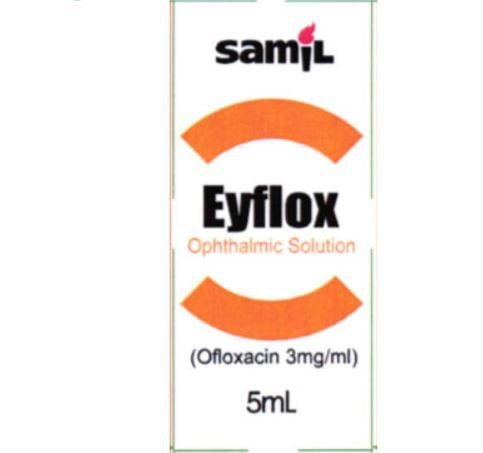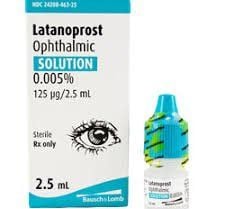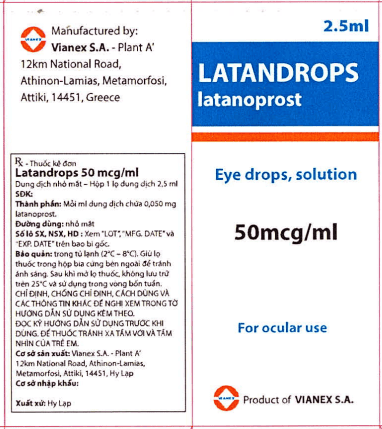This is an automatically translated article.
The article was professionally consulted with Specialist Doctor I Nguyen Thi Bich Nhi - Ophthalmologist - General Surgery Department - Vinmec Nha Trang International General Hospital.The eye is a small but complex structure. Ophthalmectomy is the term used to refer to the surgical removal of one eye with three forms: intraocular resection, ophthalmectomy, and removal of the eyeball and surrounding eye organization. Each form of eyeball removal has different indications in each disease and procedure.
1. Indications for eyeball removal
1.1. Indications for intraocular resection Intraocular resection only affects the inner parts of the eyeball, while leaving the sclera - the hard, white outer layer of the eyeball. Because the sclera is not removed, the extraocular muscles are still attached. In this procedure, an implant is usually placed inside the sclera to maintain the shape of the eyeball. The outer shape of the eyeball is thus largely unchanged, although the eye will no longer function as it originally did. This procedure is done by an eye surgeon to deal with an infection, severe eye pain, or problems inside the eye where vision has been lost; Not used for malignancies or cancers. Interventions can be performed when only a local nerve block is required without the need for general anesthesia. However, sometimes a small dose of anesthetic can be injected to keep the patient still.Indications for endophthalmectomy in specific pathologies are as follows:
Perforating trauma: This is one of the most common indications for endophthalmectomy in cases where the sclera is largely intact. Intervention should preferably be performed within 14 days of injury. In cases where the ocular extension is affected, it may be difficult to remove only the inside of the eyeball, and should be replaced by total ophthalmic resection. Blind eye: Removal of a pathologically blind eye is the last resort. Pain is controlled by injecting alcohol or chlorpromazine into the central nervous system. The advantage of endophthalmectomy in these cases would be better cosmetic results and shorter postoperative recovery time when it is certain that the sclera remains normal. 1.2. Ophthalmectomy This intervention involves removing the entire eyeball, including the eyeball and sclera, but leaving the remaining tissues around the eyeball in the orbit. This procedure is different from an intraocular resection where the sclera is also removed and this also means that the extraocular muscles must be separated from the sclera.
The most common indications for ophthalmectomy are intraocular malignancy, blind eye pain, penetrating trauma, very severe ocular injury or malformation, and prophylactic sympathomimetic ophthalmology.
Of these, adult melanoma and pediatric retinoblastoma are the most common intraocular malignancies. In some cases of malignancy, chemotherapy and radiation therapy may be an alternative to more disfiguring surgeries.
Unlike intraocular surgery, patients undergoing ocular surgery require general anesthesia. This condition will help minimize pain for the patient as well as allow for simultaneous lymph node dissection. An artificial eye may be placed at a later date.
1.3. Total eye removal This is surgery to remove the eyeball and all other components in the orbit, including the muscles, lacrimal gland system, optic nerve, and various parts of the orbital bone. . The eyelid can also sometimes be removed concurrently, depending on the extent of the tumor.
Indications for this intervention are when there are large cancers of the eye, skin over the eyes or eyelids, or cancer from other areas extending to the orbit. Other indications include pseudosclerotic scleritis and invasive mycosis of the eyeball.
Total eye removal is always performed under general anesthesia. Because this surgery is done for the spread of cancer into the orbit from another location, it is often done along with related interventions such as maxillary resection or craniectomy. After surgery, the orbit is often reconstructed with regional flaps or free flaps if major defects remain.

Người bệnh khi cắt nhãn cầu đòi hỏi phải được gây mê toàn thân để giảm đau đớn
2. What happens during eyeball removal surgery?
2.1. Preparation before surgery Before surgery, it is important to let your ophthalmologist know about all medications you are taking to see if they can be continued until surgery. Usually all medications, except blood thinners, should be continued. The length of time to stop taking blood thinners depends on the type of blood thinner and its half-life as well as the medical reasons for which it is needed.Once you have chosen a date for your surgery, remember that strenuous physical activities and swimming should not be scheduled for two weeks after surgery. Furthermore, it can also take up to two months to heal before an artificial eyeball can be fitted. This detail is like a large contact lens, custom painted by the ophthalmologist to resemble the other eye, compatible with the orbit placed inside the eye during surgery.
2.2. The surgical process Here's what will happen just before and during the ophthalmic surgery:
The surgery takes place in the operating room and the patient will be given general or local anesthesia with sedation.
Detail of the artificial eyeball has been prepared to be placed inside the eye to fill the empty cavity.
For ophthalmectomy alone, six extraocular muscles are sutured to the implant. In contrast, with the indication for endophthalmectomy, the muscles maintain their connection to the sclera so no intervention is required.
Sometimes, the eyelids are also sutured temporarily to help the wound heal and keep the eyeball in place.
The patient will be put on a large pressure bandage to protect the wound and prevent bleeding; It also helps reduce inflammation (swelling, pain, and bruising).
2.3. Post-operative care In some simple cases, ophthalmectomy can be performed on an outpatient basis, meaning that the patient can be taken home by relatives after the surgery. In addition, the patient will be prescribed pain relievers, antibiotics or even steroids to help with inflammation, which may be necessary in some cases.
Swimming, strenuous exercise, or other physical activities are restricted for two to four weeks. Patients should also avoid low back bends and heavy lifting for up to one month.
Take care to keep the eye patch dry. The bandage can sometimes feel itchy or uncomfortable, but it's important to keep the bandage on as prescribed by your surgeon.
The follow-up visit takes place about a week after surgery. At this point, the surgeon can remove the dressing and look into the eye to assess the extent of healing.
After the surgeon finds that the eye is completely healed, usually six to eight weeks later, an artificial eyeball can be inserted.
This prosthesis can last for decades if properly cleaned and maintained. Patients should also see an ophthalmologist and surgeon once or twice a year to check the health of the eye socket and clean and polish the prosthesis.

Sau khi thực hiện phẫu thuật cắt bỏ nhãn cầu, hãy tuân thủ theo chỉ dẫn của bác sĩ và thực hiện thăm khám định kỳ
3. Possible problems with ophthalmectomy
Some problems caused by ophthalmectomy can include:Bleeding Infection Scarring Eyelids drooping or difficult to close Eyeball prosthesis Falling In general, ophthalmectomy is done to increase the life expectancy of patients. Indications for ophthalmology are often to treat life-threatening tumors such as retinal cancer or to relieve eye pain for patients. Eyeball resection always requires careful and thorough planning, minimizing complication rates for long-term cosmetic comfort and satisfaction.
To examine and perform eyeball removal, you can go to the Eye specialist - Vinmec International General Hospital. The department has a comprehensive vision and eye health care function for children, adults and the elderly including refractive error testing, general examination, diagnostic ultrasound, laser treatment and surgery. In addition, ophthalmology also has the task of coordinating with other clinical departments in the treatment of pathological complications and eye injuries caused by accidents.
Why should you choose to examine and treat eye diseases at Vinmec International General Hospital?
Simple and quick procedure. Enthusiastic advice and support, reasonable and convenient examination process. Comprehensive facilities, including a system of clinics and consultations, blood collection room, dining room, waiting area for customers... The medical staff has high professional qualifications, style. Professional, caring way of working.
Please dial HOTLINE for more information or register for an appointment HERE. Download MyVinmec app to make appointments faster and to manage your bookings easily.
Reference source: intechopen.com













